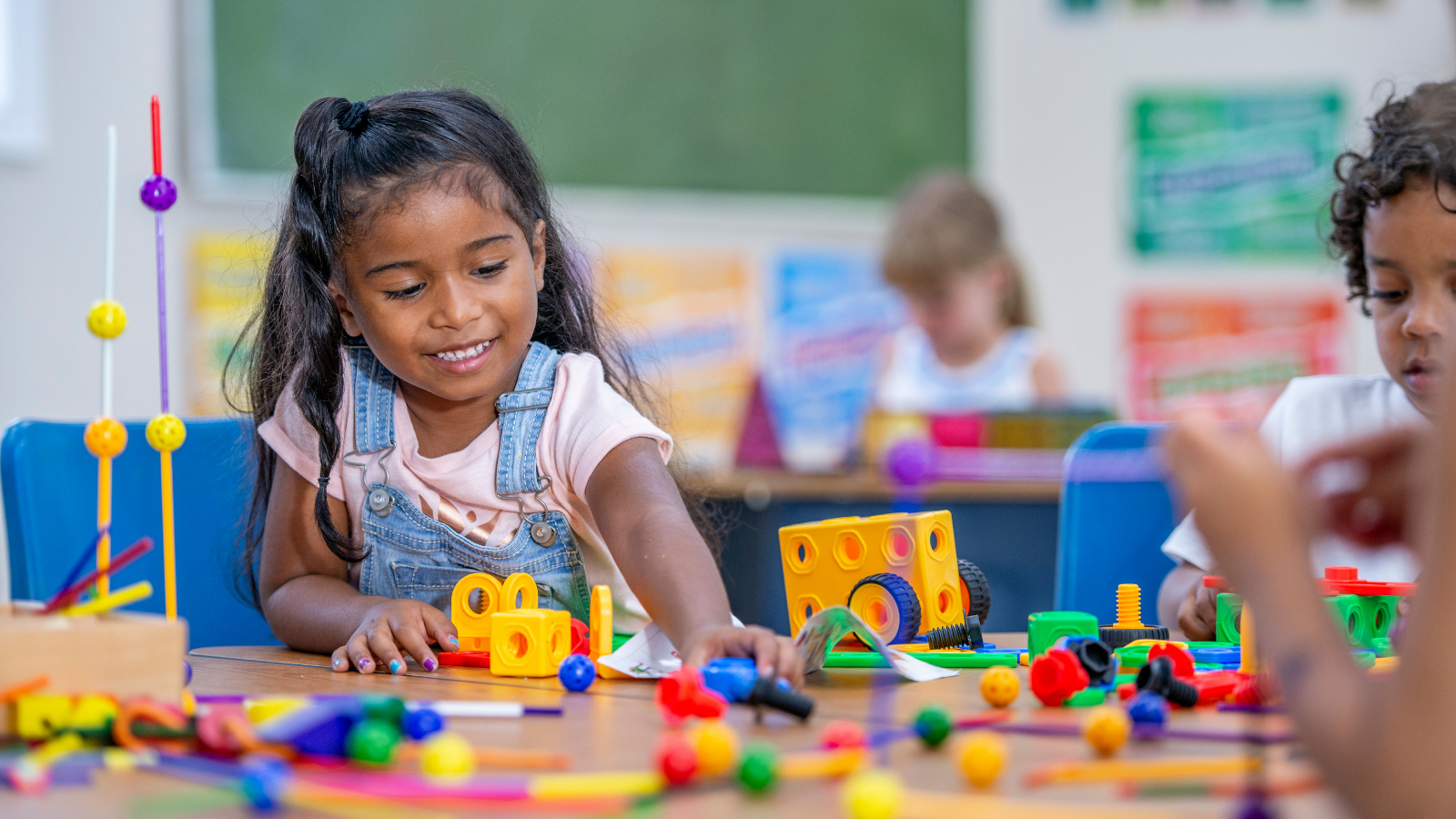
The Pros of Playful Learning in All Grades
Leaders in early childhood education share their top strategies for incorporating play into classroom instruction.
Topics: Curriculum and Instruction, Early Childhood, Pre-K–3, Student Engagement
The March/April 2022 issue of Principal magazine was designed to meet principals where they are in their journeys toward leading the elementary and middle grades with an early learning lens. This means connecting the dots between professional standards, early learning leadership competencies, developmentally appropriate practices, and equitable experiences so that students have the foundation to excel and thrive in the middle grades, high school, and beyond. A key component in this process is play as an instructional strategy in both academic and social-emotional learning (SEL).
To expand this important topic, NAESP invited educators who are passionate about aligned early learning to join an #NAESPchat on play as an instructional strategy. We dove into the social-emotional and academic benefits of playful learning, look-fors when observing playful learning in a classroom, what it looks like for the older grades, how to help parents incorporate playful learning at home, and so much more. Here are some top takeaways from the discussion.
SEL and Academic Growth
When asked how playful learning boosted academic and social-emotional learning for students, Twitter chat hosts Liz Garden and Kim Taylor—both leaders in early childhood education—offered their insight into how it empowers students.
“Think about how play helps kids take risks,” said Garden. “Kids take ownership over their learning. It can happen anywhere in school. [There are] so many benefits!”
Taylor agreed: “Students who are playfully engaged in their learning with opportunities for hands on, creative, and collaborative activities are better for it.”
“Kids engage more with others when you lower the academic expectations,” said Andy Jacks. “Engagement over apathy is always our No. 1 goal. Play provides time for social learning.”
Look-Fors During Classroom Observation
Children of all ages can reap the benefits of playful learning. Even though it’ll look different based on the grade level, one thing to look out for is engagement. Participants noted what principals should look for when they’re observing classroom instruction.
“Students are actively engaged in hands-on activities with materials that promote collaboration, creative thinking, exploration, and fun,” said Taylor.
Garden added: “I definitely look for things I can see and hear: kids engaged and lots of dialogue.”
“Lots of manipulatives and engaged students in centers,” said Gracie Branch. “There is a focused purpose for each center. Students are constructing their own knowledge through play.”
Playful Learning for the Older Grades
For students in upper elementary school, effective playful learning requires elements of play and giving students a choice in their learning.
“Student voice, student choice,” said John Mattingly. “We have focused on classroom instruction being more personalized using station rotations, flexible playlists, flipped classroom, and project-based learning. Play and engagement are there!”
“Students should have choices and not just whole group instruction,” said Branch. “There are games and manipulatives for older students and a morning meeting to start off the day! The arts and music should be prominent in the older grades as well not just in early childhood classrooms.”
“For upper elementary, it looks like not forgetting that they are kids,” said Garden. “It looks like creating engaging activities instead of scripted requirements, [and] it looks like inviting them into the learning and the planning. Remember that playful learning does not always mean playing a game or using a toy. You can plan a lesson that incorporates elements of play.”
Getting Buy-in on Playful Learning
Despite the benefits of using play as an instructional strategy, some in education—occasionally teachers, district-level decision makers, and even curriculum writers—might be hesitant to try and need a little convincing. When asked how to do this, participants gave some useful strategies.
“Cover [a teacher’s] class and just ask them to observe [you leading playful learning] for 30 minutes,” suggested Gary Karlson. “Then ask them if they learned anything new about students. They will have.”
Modeling instructional play with teachers was another way to show the value of playful learning in the classroom.
“Start by modeling instructional play during your staff meetings and professional development,” said Garden.
Taylor added: “Begin with using some play materials and activities as part of a staff meeting and asking teachers to come with activities for particular grade level standards. This usually gets them to see that it is easier than they think.”
Principals even have the ability to ensure curriculum writers incorporate playful learning into classroom curricula. Communication and building relationships are key. Sometimes this means getting creative as you spread the message.
“[Kim Taylor] and I are embarking on a traveling road show with our message of the importance of play as an instructional strategy,” said Garden. “Talking to higher education faculty and superintendents—the people that need to hear the message.”
“You have to go into their space on their time,” said Taylor. “In Massachusetts, we are submitting a proposal to present at the superintendent’s/school committee conference.”
Continuing Playful Learning at Home
Playful learning can happen at home, too, and it’s a great opportunity for schools engage families and bridge instruction from the classroom with continued learning at home.
“Board games, especially we love Taco Cat Goat Cheese Pizza,” said Jacks. “Games teach turn taking, rules, patience, and give quality time away from devices.”
“Hopefully schools are encouraging families to play games, do imaginative play, and design instead of sending home packets and assignments that kill engagement and love of learning,” added Garden.
Follow #NAESPchat on Twitter to read responses from this Twitter chat—or add your own! Plus, save the date for our next Twitter chat: On May 4, as part of our Teacher Appreciation Week celebration May 2-6, we’ll discuss strategies to create a culture of support for teachers.

